The Featured Creatures collection provides in-depth profiles of insects, nematodes, arachnids, and other organisms relevant to Florida. These profiles are intended for the use of interested laypersons with some knowledge of biology as well as academic audiences.
Introduction
The scarlet-bodied wasp moth, Cosmosoma myrodora (Dyar), is a beautiful native insect. Because of its striking adult coloration, including a bright red thorax and abdomen, and transparent wings patterned with black, this moth immediately stands out in Florida landscapes. Larval feeding is restricted to two native plants in the genus Mikania, family Asteraceae.
Distribution
The scarlet-bodied wasp moth is found throughout Florida, and the coastal regions of Texas, Louisiana, Mississippi, Alabama, Georgia, and South Carolina (Figure 1).
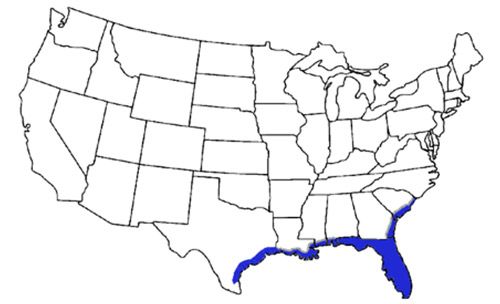
Credit: Diego Moscoso, University of Florida
Description
Adult
Adult length is 1.52 ± 0.09 cm (mean ± SD) (n= 5). The thorax and abdomen are bright red, and the latter has blue metallic dots on the dorsal (upper) side (Figure 2). The wings are transparent with black patterns. The ventral (lower) side of the male's abdomen has two pouches containing fine filaments (Figure 3), called flocculence. The ventral side of the female does not have these pouches (Figure 4).
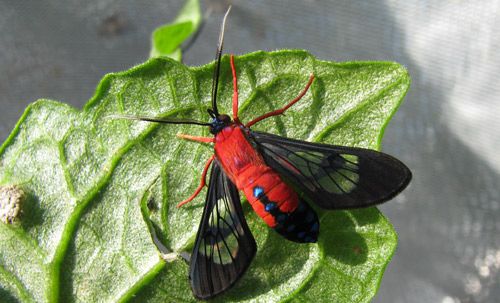
Credit: Rodrigo Diaz, University of Florida
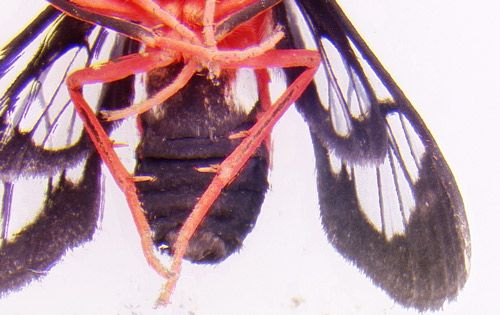
Credit: Diego Moscoso, University of Florida
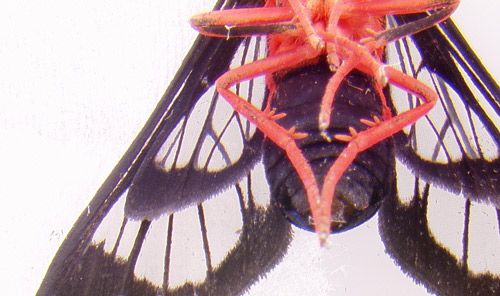
Credit: Diego Moscoso, University of Florida
Pupae
Pupae are 1.40 ± 0.09 cm long (mean ± SD) (n= 5). They are protected by a 2.31 ± 0.13 cm long cocoon (mean ± SD) (n= 5), formed by the setae (hairs) of the last instar (Figures 5 and 6). The cocoon might protect the pupa from natural enemies such as parasitoids or predators, and/or from desiccation. Early pupae are white (Figure 7). Mature pupae are red and black (Figure 8).
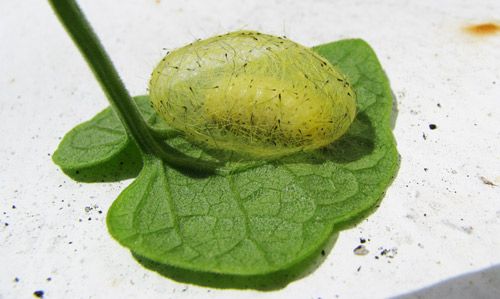
Credit: Rodrigo Diaz, University of Florida
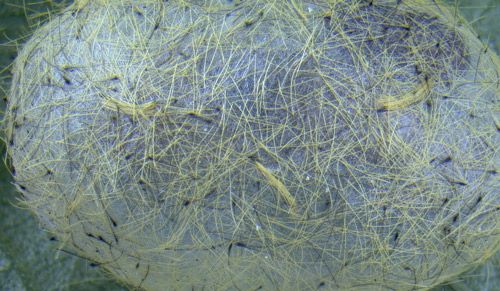
Credit: Rodrigo Diaz, University of Florida
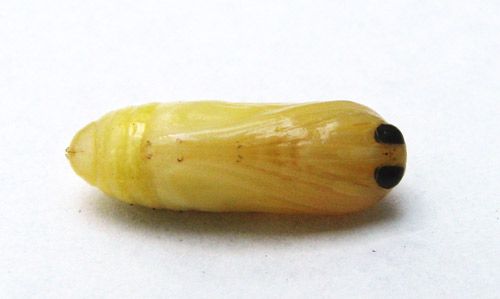
Credit: Rodrigo Diaz, University of Florida
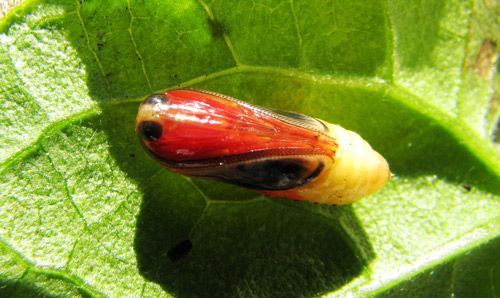
Credit: Diego Moscoso, University of Florida
Larvae
First instar larvae are 2.80 ± 0.32 mm long (mean ± SD) (n= 5), and they can grow up to 21.61 ± 0.78 mm long (mean ± SD) (n=4) by the last instar. Larvae are covered by non-urticating (non-stinging) white setae (hairs). The color of the larvae changes from whitish in young larvae to bright yellow as the larvae ages (Figures 9, 10, and 11).
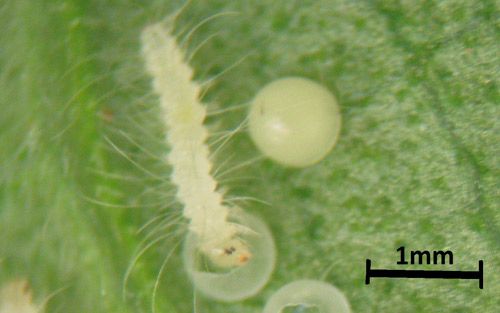
Credit: Diego Moscoso, University of Florida
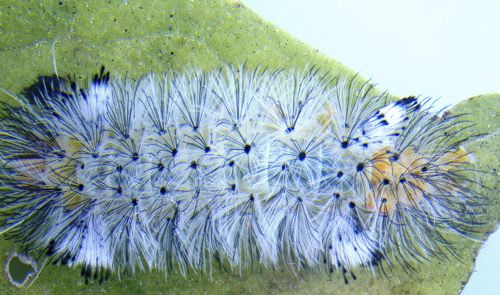
Credit: Diego Moscoso, University of Florida
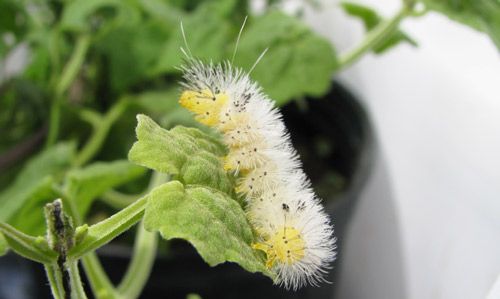
Credit: Rodrigo Diaz, University of Florida
Eggs
The diameter of eggs is 0.88 ± 0.06 mm (mean ± SD) (n=5). Eggs are white in coloration (Figure 12) and laid individually. A female can oviposit from 75 to 170 eggs during her lifetime (Castillo 2012).

Credit: Diego Moscoso, University of Florida
Biology and Host Plants
The scarlet-bodied wasp moth completes its life cycle in 50 to 60 days. Development times for larva and pupa are 7 days and 11 days, respectively (Castillo 2012). The larvae of the scarlet-bodied wasp moth feed on the Florida Keys hempvine (Mikania cordifolia Willd.) (Figure 13) (Torres 1992), and the climbing hempvine/hempweed (Mikania scandens (L.) Willd.) (Figure 14) (Asterales: Asteraceae). Upon hatching, larvae feed on the egg chorion (Figure 9), perhaps because it is a rich source of protein. Larvae are aggressive folivores. The last instar migrates to protected areas of the plant or to the ground before it forms a cocoon.
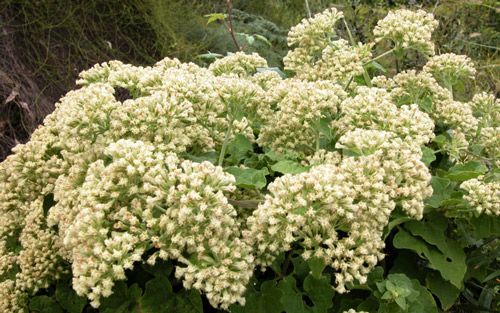
Credit: Rodrigo Diaz, University of Florida
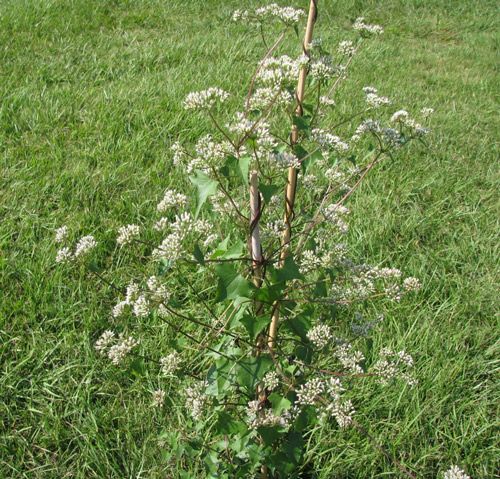
Credit: Rodrigo Diaz, University of Florida
Adult males of the scarlet-bodied wasp moth feed on dog fennel (Eupatorium capillifolium Lam. (Small.) (Asterales: Asteraceae)) (Figure 15) with their proboscis to obtain defensive compounds (pyrrolizidine alkaloids) that provide protection from predators like the golden orb-web spider (Trichonephila clavipes L.) (Araneae, Araneidae) (Conner et al. 2000). During courtship the males passes these compounds to the female.
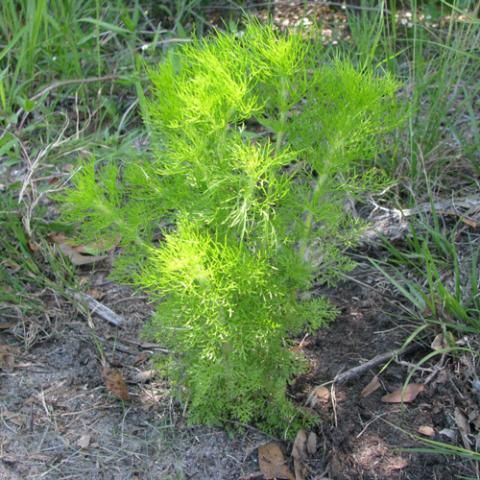
Credit: Rodrigo Diaz, University of Florida
Mating Behavior
The male approaches the female, then flies around her and flutters for a while in close range. When the male is in the air, he discharges flocculence from his pouches which resembles a net that diffuses toward the female like a mist (Conner et al. 2000). After the female is surrounded by the flocculence, the male tries to copulate. The male transfers the pyrrolizidine alkaloids acquired from dog fennel to the female through seminal infusion, and the same alkaloids are then transferred to eggs by the female as a defense against predation. If the male does not obtain the alkaloid, females and eggs are more susceptible to predation (Conner et al. 2000).
Natural Enemies
In the spring of 2012, Cosmosoma myrodora larvae collected in St. Lucie County, Florida, were parasitized by Hyphantrophaga sellersi (Sabrosky) (Diptera: Tachinidae) (Figure 16) and an undescribed Tetrastichinae parasitoid (Hymenoptera: Eulophidae) (Figures 17 and 18).

Credit: Rodrigo Diaz, University of Florida

Credit: Rodrigo Diaz, University of Florida
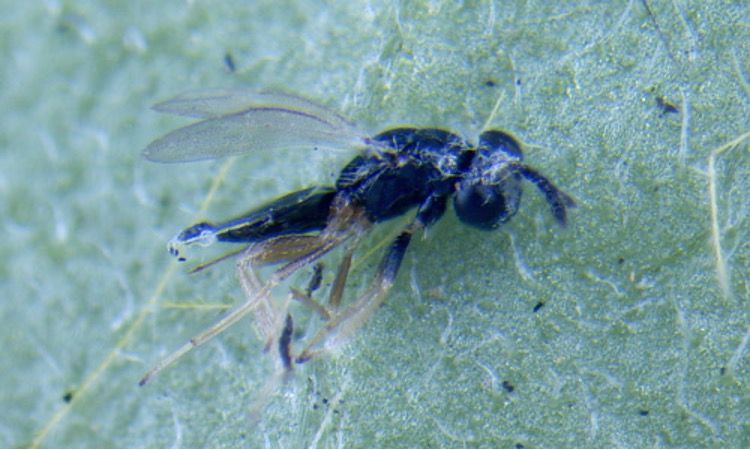
Credit: Rodrigo Diaz, University of Florida
Selected References
Castillo JA. 2012. Desarrollo de Cosmosoma myrodora y Estigmene acrea (Lepidoptera: Arctiidae) en la maleza Mikania micrantha y las plantas nativas Mikania cordifolia y Mikania scandens (Asteraceae) en Florida. (Tesis de bachiller). Zamorano University. Zamorano, Honduras. 23p.
Conner W, Boada R, Schoroeder F, Gonzalez A, Meinwald J, Eisner T. 2000. "Chemical defense: bestowal of a nuptial alkaloidal garment by a male moth on its mate." Proceedings of the National Academy of Sciences USA 97: 14406–14411.
Torres JA. 1992. "Lepidoptera outbreaks in response to successional changes after the passage of Hurricane Hugo in Puerto Rico." Journal of Tropical Ecology 8: 285–298.